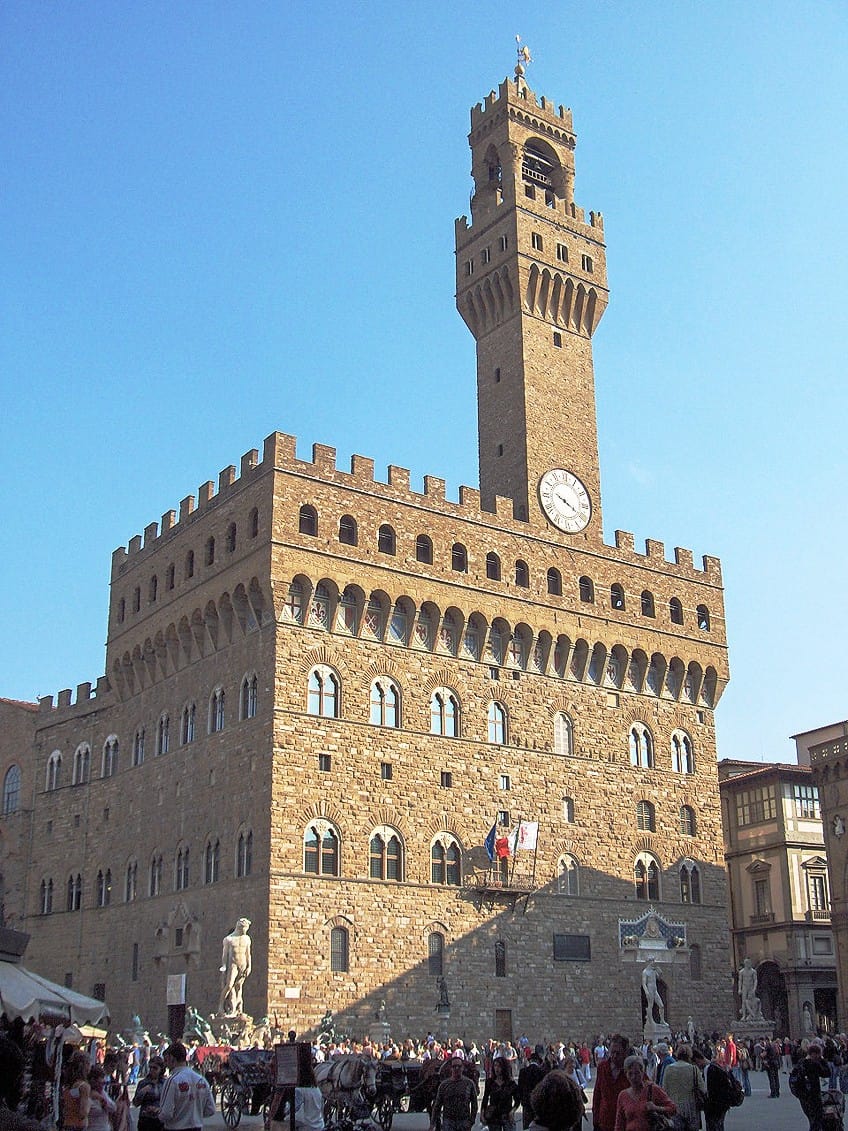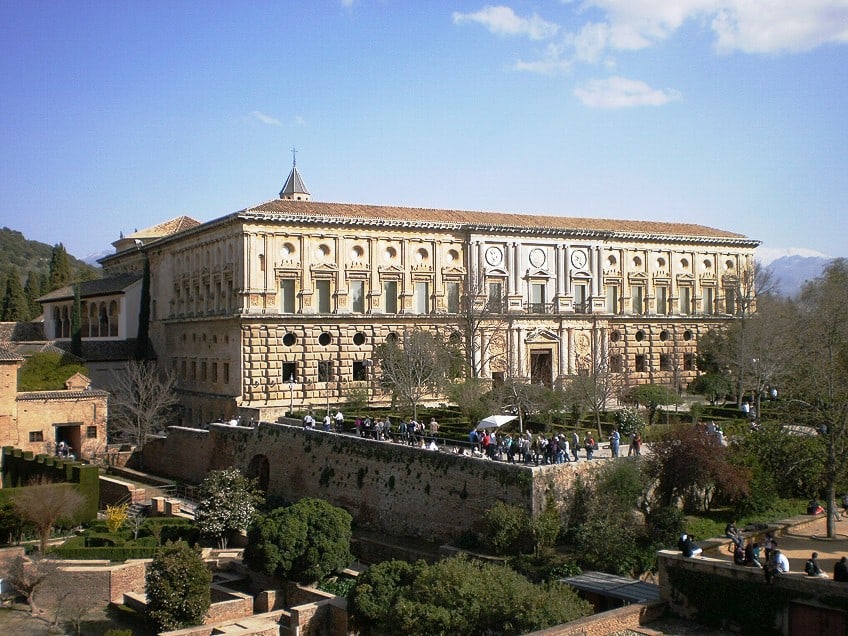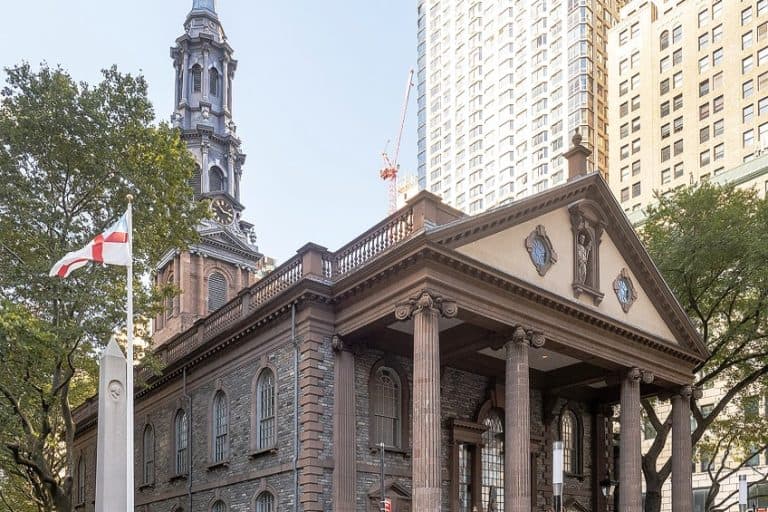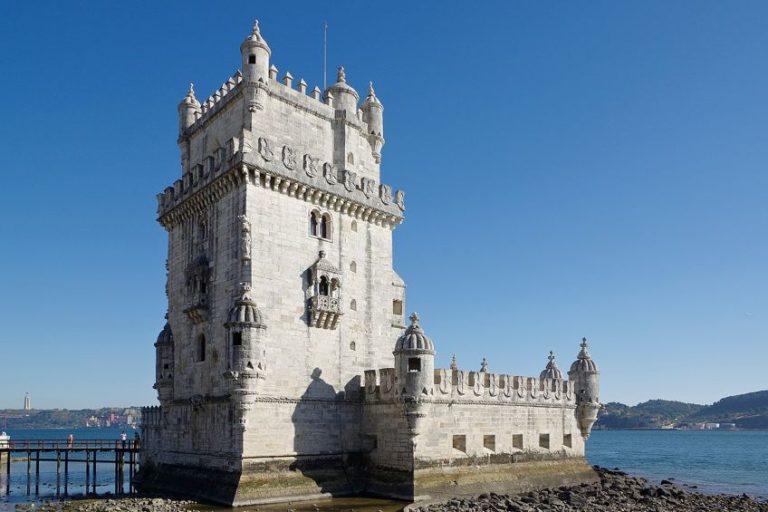Famous Renaissance Buildings – Masterpieces of a Golden Age
There are many famous Renaissance buildings throughout Europe, but we only have time to look at a few of them today. Throughout the body of this discussion, we are going to examine ten of the most famous Renaissance buildings. Each of these is located in Europe, and many are found in Italy, but examples of this famous period of architecture have been included from other parts of the continent. If you want to learn a bit more about some of the most famous Renaissance buildings, then it should be worth reading on!
Table of Contents
- 1 A Look at Famous Renaissance Buildings
- 1.1 Palazzo Vecchio (1298 – 1314) in Florence
- 1.2 Palazzo Pitti (1458 – 1465) in Florence
- 1.3 Santa Maria delle Grazie (1463 – 1497) Milan
- 1.4 Sistine Chapel (1473 – 1481) in Vatican City
- 1.5 St. Peter’s Basilica (1506 – 1626) in Vatican City
- 1.6 Villa Madama (1518 – 1525) in Rome
- 1.7 Château de Chambord (1519 – 1547) in Chambord
- 1.8 Palace of Charles V (1527 – 1637) in Granada
- 1.9 Antwerp City Hall (1561 – 1565) in Antwerp
- 1.10 Børsen (1619 – 1640) in Copenhagen
- 2 Frequently Asked Questions
A Look at Famous Renaissance Buildings
The Renaissance period was a period of intense discovery, invention, and education. In addition to this, it led to a resurgence in architecture that was inspired by Classical forms. Many new and innovative examples of architecture blossomed during this period and led to some of the most stunning examples of architecture ever constructed.
So, let’s have a look at ten of the most famous Renaissance buildings to see what sets them apart from the rest.
Palazzo Vecchio (1298 – 1314) in Florence
| Architect | Arnolfo di Cambio (1245 – 1301/10) |
| Date Constructed | 1298 – 1314 |
| Function | Town hall |
| Location | Florence, Italy |
The Palazzo Vecchio is one of the oldest and most illustrious Italian Renaissance buildings to have ever been constructed. While the structure is not quite as elaborate in its external design as some of the later Renaissance structures that would be designed, but it has been used as a seat of power in Florence since it was constructed. It is likely best known as the building that served as the one-time residence of the Medici family.
One of the most notable architectural elements of this structure is that it features a lengthy above-ground passageway called the Vasari Corridor, which connects it to the Palazzo Pitti. This allowed the Medici family to move between their residences without needing to move through the streets.

The Palazzo Vecchio is constructed with a solid stonework design, and as this is one of the earliest structures to have received Renaissance changes and additions, it does still retain some of an older form. There are Gothic windows with trefoil arches. However, the earlier Gothic aspects were supplemented with Renaissance additions that came later, such as 15th-century bas-reliefs. The building is also noted as a strong defensive position, as some of the arches could be used to repel potential invaders.
Palazzo Pitti (1458 – 1465) in Florence
| Architect | Various |
| Date Constructed | 1458 – 1465 |
| Function | Museum |
| Location | Florence, Italy |
The Palazzo Pitti is a notable instance of Renaissance architecture example. It also has a fascinating history attached to it that was born out of a sense of jealousy and political maneuvering. The palace was originally commissioned by Luca Pitti, a banker from Florence who had been a long-time friend and rival to the Medici family. He saw himself as more of a rival than they did, and he decided to produce his own palace in response to theirs. He wanted the Palazzo Pitti to be grander than anything the Medici family had produced, but he eventually bankrupted himself because of this, and, after his death, it was sold to the Medici Family.

The original architect behind the Palazzo Pitti has been up for debate, but a number of famous Renaissance architects have contributed to the design of the palace, such as Vasari. The overall design of the exterior of the Palazzo Pitti makes use of rusticated stonework, and it gives the exterior an imposing atmosphere. Part of the exterior was also designed to be reminiscent of a Roman aqueduct to further add to the Classical nature of the structure’s design.
Santa Maria delle Grazie (1463 – 1497) Milan
| Architect | Guiniforte Solari (1429 – 1481) and Donato Bramante (1444 – 1514) |
| Date Constructed | 1463 – 1497 |
| Function | Church |
| Location | Milan, Italy |
The Santa Maria delle Grazie is a church located in Milan, and it has an elongated design with a stonework exterior and a pronounced façade. The façade is usually seen as one of the best-known elements of the architecture of this church. The church makes use of semi-circular apses, and a drum-shaped dome that has become one of the most famous aspects of the design.
However, the church is less known as a piece of famous Renaissance architecture and more as a location to house one of the most famous pieces of Renaissance art.

In the refectory of the building, this Renaissance structure is home to the mural by Leonardo da Vinci known as The Last Supper. This immensely famous piece of Renaissance art is probably one of the most famous of all time, and, after the Mona Lisa, likely the most well-known piece of art that da Vinci ever produced. The work has seen multiple attempted restorations, but little of the original painting still exists to this day. However, there are numerous other pieces of art around it.
Sistine Chapel (1473 – 1481) in Vatican City
| Architect | Giovanni dei Dolci (15th century) |
| Date Constructed | 1473 and 1481 |
| Function | Chapel |
| Location | Vatican City |
The Sistine Chapel is a structure that is fairly simple in its general design, but it has still become one of the most famous Renaissance buildings regardless of this. The exterior of the building is considered to be unadorned, but the interior is where much of the emphasis has been placed. The barrel vaults on the ceiling, the arched windows, and the numerous open spaces have allowed for the most famous part of this Italian Renaissance building.

The Sistine Chapel is not generally noted for its architecture, but rather for its art. The structure features a comprehensive array of frescoes throughout its interior. Many of these were painted by some of the most famous Renaissance architects and artists. The most famous of these artworks was painted by Michelangelo. The famous Creation of Adam fresco is on the ceiling of the chapel, and it is one of the most well-known paintings of all time.
St. Peter’s Basilica (1506 – 1626) in Vatican City
| Architect | Various |
| Date Constructed | 1506 – 1626 |
| Function | Church |
| Location | Vatican City |
St. Peter’s Basilica may be the most famous Italian Renaissance building, and this also makes it one of the most famous Renaissance buildings in general. The structure has a long and storied history as numerous famous Renaissance architects worked on it over the many decades that it took to complete this notable Renaissance structure.
However, the architect most associated with the structure, whose work is considered to be most foundational, was the Renaissance master Michelangelo.

The church is constructed atop a spot that has held many different churches over the years. According to tradition, the body of St. Peter was buried in the spot where St. Peter’s Basilica is now found. This led to the construction and design of this church to be seen as one of the most important for the Vatican, and so the church is one of the most illustrious and ambitious Renaissance architecture examples and is especially notable for the dome that stands above the church.
Villa Madama (1518 – 1525) in Rome
| Architect | Raphael (1483 – 1520) and Antonio da Sangallo the Younger (1484 – 1546) |
| Date Constructed | 1518 – 1525 |
| Function | Government property |
| Location | Rome, Italy |
Villa Madama is a truly stunning and famous Renaissance building that was located in a rural region outside Rome. It is no longer rural. The structure was originally designed by the great Renaissance master Raphael, but subsequent work was completed by other architects, and the structure remained unfinished. The villa is considered to be one of the first of its kind and a notable instance of the revival of Roman-style villas that would become more commonplace in Renaissance architecture.

Château de Chambord (1519 – 1547) in Chambord
| Architect | Domenico da Cortona (1470 – 1549) |
| Date Constructed | 1519 – 1547 |
| Function | Palace |
| Location | Chambord, France |
The Château de Chambord is considered to be one of the most famous Renaissance buildings to have been constructed in France and an important hunting lodge that had been commissioned by the King of France. It is located amidst a stunning and abundant array of greenery.

The site was constructed to appear like a medieval castle with a keep, towers, moat, and various other elements. However, the keep was designed using Renaissance sensibilities, and it was never actually intended as a reinforced structure despite that being the general atmosphere that the architects were attempting to emulate.
Palace of Charles V (1527 – 1637) in Granada
| Architect | Pedro Machuca (16th century) |
| Date Constructed | 1527 – 1637 |
| Function | Museum |
| Location | Granada, Spain |
The Palace of Charles V is a notable Renaissance building located in Spain that is rather fascinating because it was meant to be constructed for the monarchs, but that never came to pass. It was left unfinished, and a roof was only added to it in the 1960s when it became beneficial to have one for its new existence as a museum. The structure was notable for being designed by one of the students of Michelangelo, the great Renaissance master.

Antwerp City Hall (1561 – 1565) in Antwerp
| Architect | Various |
| Date Constructed | 1561 – 1565 |
| Function | City hall |
| Location | Antwerp, Belgium |
The Antwerp City Hall is one of the most famous Renaissance buildings and also an important structure in the history of Antwerp as it has had a prime place in the politics of the city for centuries. The structure is still in use to this day as a political structure. It is the main city hall of the city and an important site.
It has also gone through a number of renovation attempts over the years to try and ensure that it is still able to be used.

The Renaissance structure is notable for its use of Doric and Ionic columns that separate its large windows, it features a large and highly ornamental section that is located in the center of the building, and various later additions included a roof over what had been an open-air courtyard and various other small changes that were meant to be more stately in their general presentation.
Børsen (1619 – 1640) in Copenhagen
| Architect | Lorentz van Steenwinckel (1585 – 1619) and Hans van Steenwinckel the Younger (1587 – 1639) |
| Date Constructed | 1619 – 1640 |
| Function | Government building |
| Location | Copenhagen, Denmark |
Børsen is a very old and important instance of famous Renaissance architecture in Copenhagen. This Danish structure was originally constructed as a stock exchange in the 17th century. This makes it one of the oldest and most important examples of an economic building in the city and the country. It is also situated beside the seat of the Danish Parliament. So, it is located centrally and has taken pride of place in the city’s architectural landscape.

This Renaissance architecture example is noted for its use of a large spire that stretches 56 m (or 183.73 ft) into the sky above the Danish capital city. The spire is designed to appear like dragons that have circled each other and become intertwined. The structure has come to be seen as one of the most important examples of the Dutch Renaissance style. The structure continued to be used as a stock exchange until the mid-1970s. Today, it is a government building.
And with this last piece of famous Renaissance architecture, we come to the end of our look at famous Renaissance buildings. Today, we have examined ten of the most notable Renaissance architecture examples. Many of these structures formed part of the highly influential Italian Renaissance buildings, but structures in this era were noted throughout Europe. If you ever get the chance to see some of these Renaissance structures for yourself, you should definitely treat yourself!
Frequently Asked Questions
What Was the Renaissance Period?
The Renaissance period was an immensely important part of the history of Europe. This period came after the Middle Ages and lasted from the 14th to the 17th century. This period of time was seen as a period of growth and development in many different fields. The arts, politics, economics, and various other fields thrived and grew during this period as education blossomed throughout Europe and new ideas were being explored. This period is seen as the bridging period between the medieval and modern periods.
What Is Renaissance Architecture?
Renaissance architecture was the architecture that blossomed during the Renaissance period. This period saw a resurgence in interest in Classical forms from ancient Greece and Rome, and this led to its many influences on famous Renaissance architects. This architectural style originated in Italian Renaissance buildings, but after the incredible influence of these structures, it soon spread throughout Europe.
What Are the Common Characteristics of Renaissance Architecture?
Renaissance architecture is characterized by an attempt to return to Classical architecture in many ways. This period saw the rediscovery of numerous instances of Roman art and culture, and so Renaissance architecture started to emulate that general design ethos. This led to the use of columns, arches, domes, and other Classical elements throughout Renaissance structures.
Who Are the Most Famous Renaissance Architects?
Some of the most famous Renaissance architects were also noted as artists in other fields, such as sculpture and painting. Some of the most notable were Filippo Brunelleschi, Andrea Palladio, Donato Bramante, and Michelangelo. There were many others, but these are some of the most well-known of them all.
What Is the Most Famous Italian Renaissance Building?
The most famous Renaissance buildings are generally considered to be those in Italy because this is where the Renaissance period began. The most famous of all Renaissance structures, and by extension, the most famous Italian Renaissance building, is likely St. Peter’s Basilica. This immensely famous church in the Vatican was designed by numerous famous Renaissance architects and took a long time to build, but it remains one of the most famous to have ever been constructed.
Justin van Huyssteen is a freelance writer, novelist, and academic originally from Cape Town, South Africa. At present, he has a bachelor’s degree in English and literary theory and an honor’s degree in literary theory. He is currently working towards his master’s degree in literary theory with a focus on animal studies, critical theory, and semiotics within literature. As a novelist and freelancer, he often writes under the pen name L.C. Lupus.
Justin’s preferred literary movements include modern and postmodern literature with literary fiction and genre fiction like sci-fi, post-apocalyptic, and horror being of particular interest. His academia extends to his interest in prose and narratology. He enjoys analyzing a variety of mediums through a literary lens, such as graphic novels, film, and video games.
Justin is working for artincontext.org as an author and content writer since 2022. He is responsible for all blog posts about architecture, literature and poetry.
Learn more about Justin van Huyssteen and the Art in Context Team.
Cite this Article
Justin, van Huyssteen, “Famous Renaissance Buildings – Masterpieces of a Golden Age.” Art in Context. November 7, 2023. URL: https://artincontext.org/famous-renaissance-buildings/
van Huyssteen, J. (2023, 7 November). Famous Renaissance Buildings – Masterpieces of a Golden Age. Art in Context. https://artincontext.org/famous-renaissance-buildings/
van Huyssteen, Justin. “Famous Renaissance Buildings – Masterpieces of a Golden Age.” Art in Context, November 7, 2023. https://artincontext.org/famous-renaissance-buildings/.









